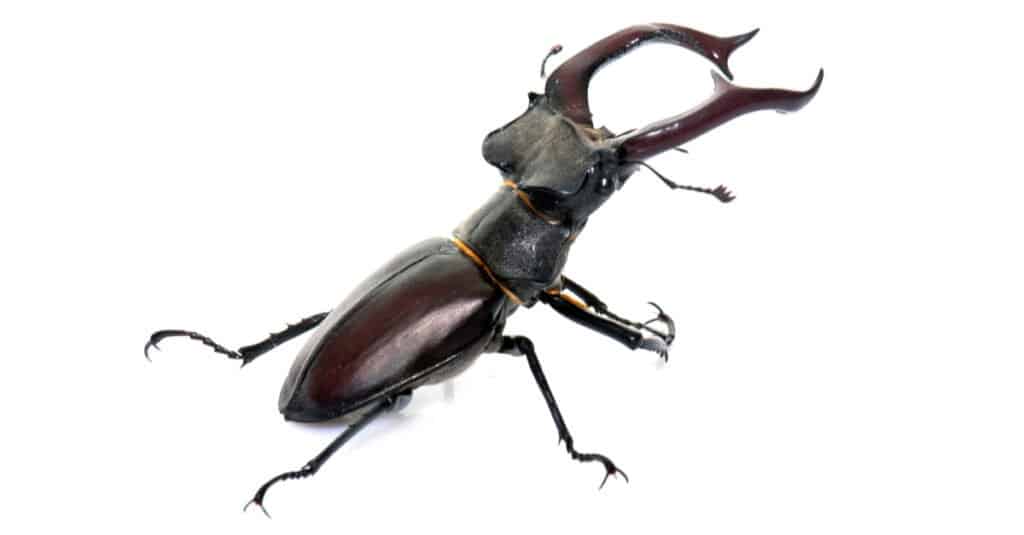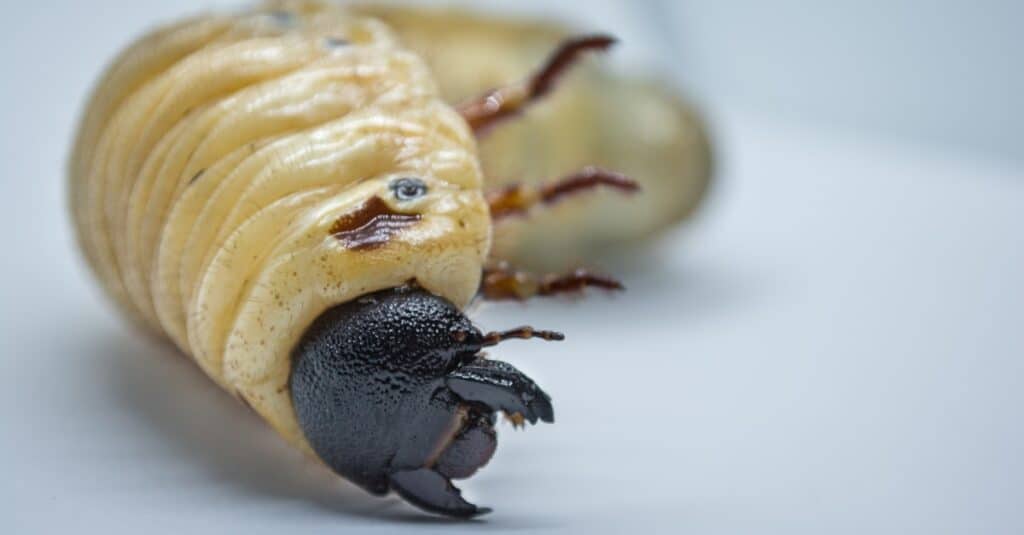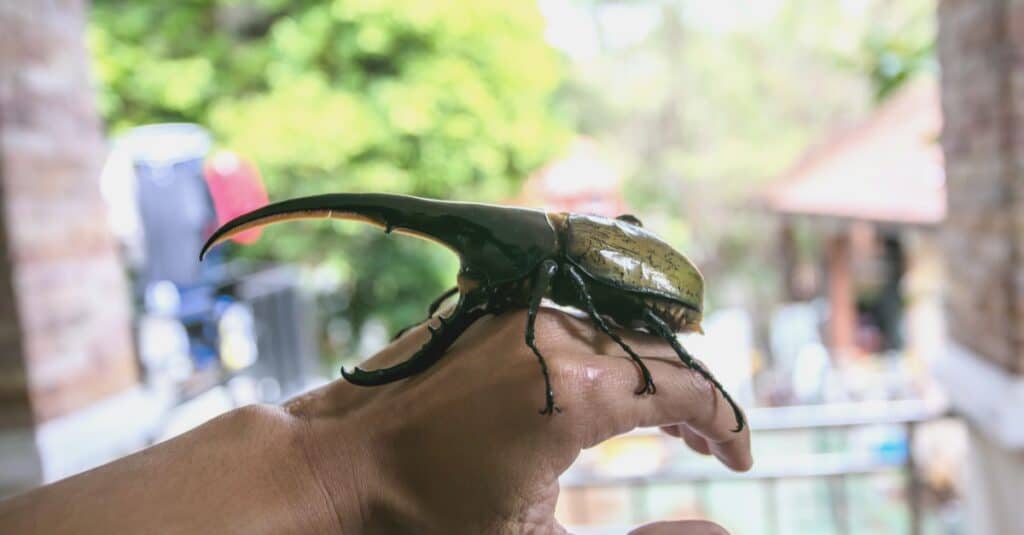The stag beetle has been around for over 150 million years, dating back to the Middle Jurassic Period. It belongs to a family of enormous, hard-shelled, flying insects that consume rotting wood. Besides this, stag beetle species are so prolific that they make up 40% of the more than 300,000 species of beetles worldwide. And because there are so many of them, scientists had to come up with Latin names to keep track of them all. Of these stag beetles, the Hercules beetle is the world’s longest. So, let’s find out how the stag beetle vs. Hercules beetle weighs up against each other in an epic beetle battle.
Comparing Stag Beetle vs. Hercules Beetle
Appearance
Stag beetles are primarily black or brown, but some are metallic green and iridescent red. Likewise, Hercules beetle’s shells have a metallic glint and the color of the stiff front wings changes with the humidity. They are yellow or green in dry weather and turn black when it is humid.
Hercules Beetle vs. Stag Beetle: Size
Male stag beetles are larger than females, and the larvae, which resemble a grub, can grow up to 3 inches. The stag beetle’s pincers can grow so large that they negatively impact its movement. This beetle is also known as the pinching bug because its mandibles resemble a stag’s antlers.
Hercules beetles are the largest in the world, reaching 7 inches, whereas the largest stag beetle will grow to 5 inches. The Hercules beetle’s Latin or scientific name, Dynastes Hercules, means master, lord, or ruler. Hercules was a Greek demigod renowned for his immense strength.
Hercules Beetle vs. Stag Beetle: Behavior
Male Stag beetles are not harmful to humans and will not bite a human. The female stag beetle, however, can inflict a painful bite. The Hercules beetle spends most of its life as a larva. It takes a larva or grub two years to turn into an adult. The larvae can grow to 4.5 inches long and weigh over 3.5 ounces. If disturbed or threatened, it makes a huffing sound and releases a foul odor.
Where Are They Found?

cynoclub/Shutterstock.com
Stag beetles are found in Europe and North America and are often bought as pets in South Korea and Japan. Hercules beetles are prevalent in Central and South America in the tropical rain forests in the mountains and lowlands and on Caribbean islands such as Trinidad and Tobago. The large grubs live under rotting wood, and the adults hide inside logs and under dry leaves. They are sold worldwide as pets at very high prices. The Japanese keep them in terrariums and consider them good luck charms.
Stag Beetle vs. Hercules Beetle: Diet
Stag beetle larvae also eat rotting and decaying wood in its larva stage, which could last up to seven years. After that, the adult beetle will feed on rotten wood and woodchips.
Hercules Beetles larvae are known as saproxylophagous, which means they feed on the rotting wood they live in for the first two years of life. The adult beetle feeds on fresh and rotting fruit and will eat peaches, apples, pears, and grapes in captivity.
Reproduction

The female stag beetle will often return to the place of her birth to lay her eggs after mating. She will lay approximately 30 eggs near some rotting wood in the soil. When the larva emerges, they start feeding on the rotting wood, which will undergo different larval stages before becoming an adult. The total lifespan between a larva and an adult beetle can sometimes be as much as seven years.
The Hercules larva or grub can take up to two years to turn into an adult beetle which will only live for three to six months. However, they can live up to one year in captivity if well looked after. The female is gravid for a month before laying her eggs, as many as 100 at a time, typically on the ground or in rotting wood. It takes 27 days for the eggs to hatch; when they do, the larva will eat the rotting wood and molt three times before reaching full size. When this happens, they pupate for 32 days before turning into an adult Hercules beetle.
Claws, Horns, and Antlers
Hercules beetles and stag beetles do not use their antlers for biting. Instead, they use their antlers to ward off predators. Another use for these horns is to fight off males during the mating season. And because the Hercules beetle horns are so desirable, a large male with big antlers can fetch a price of $470 to $938. The Hercules beetle is aptly named as it is powerful and can pick up objects 850 times its weight. These beetles have been known to flip the lid off the terrarium in which they are kept. Sadly, the stag beetle’s existence is under threat in many parts of the world due to developments encroaching on their habitats.

Tanawat Palee/Shutterstock.com
Stag Beetle vs. Hercules Beetle: Predators
The stag beetle’s main predators are birds, frogs, lizards, small mammals, crows, and foxes. The Hercules beetle includes predators like bats, rats, and birds.
Up Next
The post Stag Beetle vs. Hercules Beetle — An Epic Beetle Battle appeared first on AZ Animals.
from Animal News, Facts, Rankings, and More! - AZ Animals https://ift.tt/jgE7aQR